Ned and I have been monitoring a second vernal pool this year. The new pool is in Bridport on the southern extension of Snake Mountain. It is right in the middle of the Champlain Valley, but up on a rocky ridge. The pool is almost twice a big as our other one and a foot deeper. It is lower in elevation at 570 feet above sea level (the other one is in the foothills of the Green Mountains at 1260 feet a.s.l.).
The most important difference between the two pools might be chemical. The new pool sits between two ledges of Middle Cambrian dolostone or dolomitic quartzite, limey rocks which enrich the soil with calcium and magnesium. The old pool is surrounded by Cheshire quartzite and the vegetation there (red oak, beech, birch) suggests that the soils are not rich in calcium.

The half billion year-old calcareous rock has a conspicuous impact on the flora. The spring display of trillium, bloodroot, hepatica, Dutchman’s breeches, wood anemone, spring beauty, early meadow rue, and trout lily at the new pool compares with a dearth of spring ephemerals at the old pool. There are elms and butternuts at the new pool, and nearby are a dozen rare or uncommon plants (S1 – S3) including four state-listed threatened or endangered species.
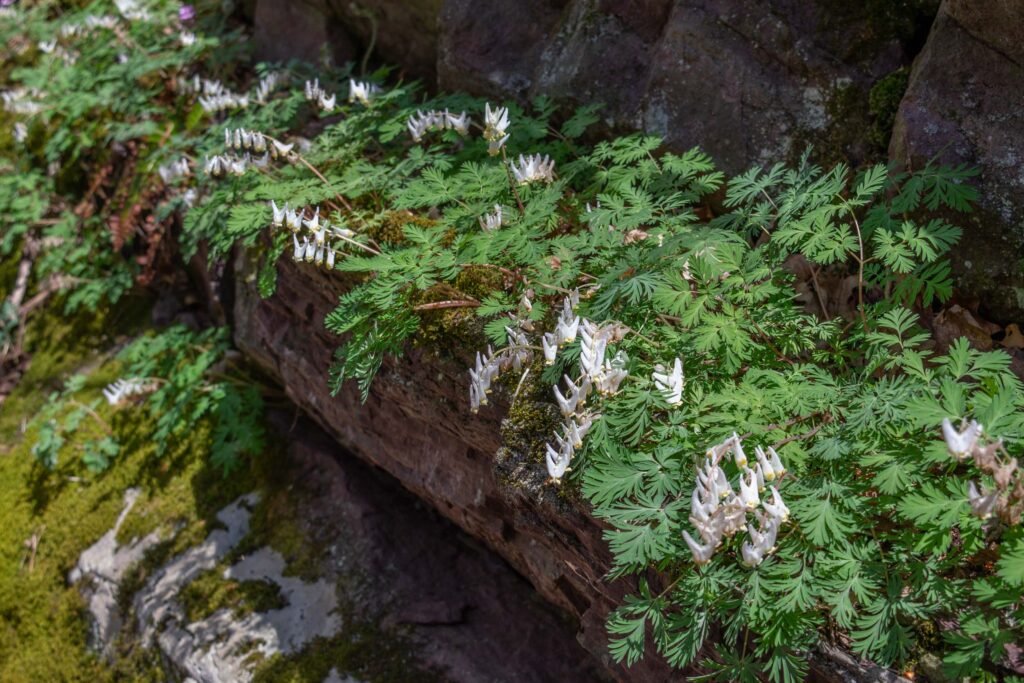
Faunal diversity in the pool might also reflect the enriched bedrock and soil. Along with the spotted salamanders and wood frogs, there are lots of Jefferson/blue group salamanders breeding in the pool. We don’t know how many because it turns out we are really bad at distinguishing the egg masses of spotted, Jefferson/blue, and the hybrid/unisex group. It is hard to quantify the difference in salamanders except that we know there is more than one species of ambystomid in the new pool.
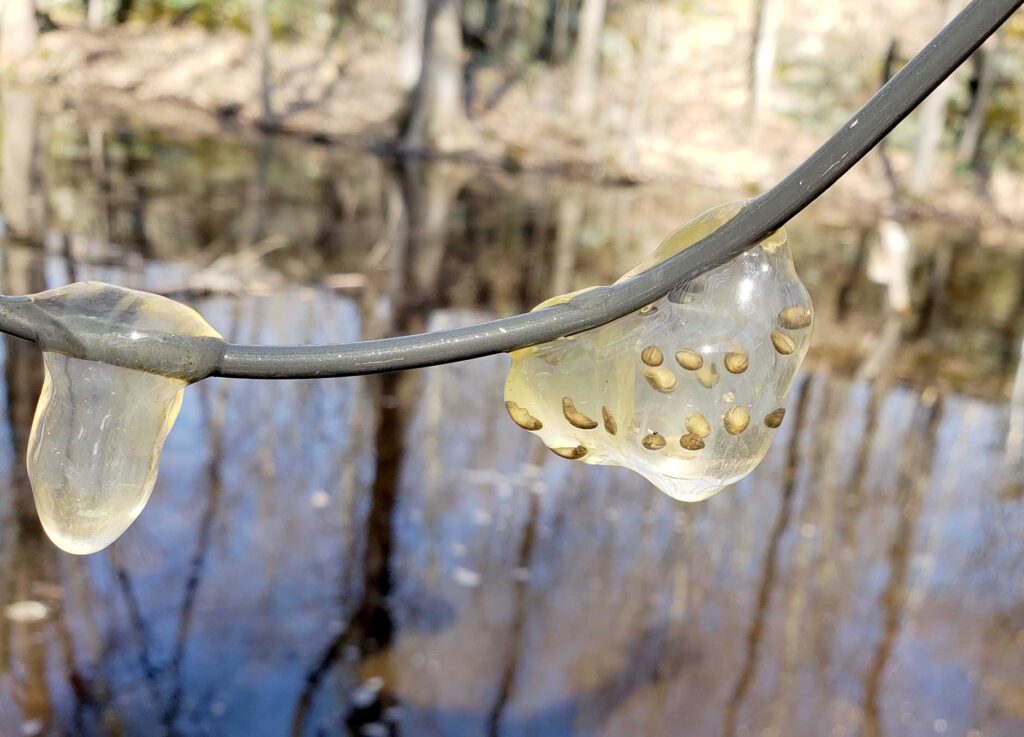
The most fun difference between the two pools is how many fairy shrimp they have. We found none at the old pool. This weekend we visited the new pool with Kevin Tolan who walked up to the pool’s edge, bent over, and said, “There’s a fairy shrimp.” We then saw lots of them and have since captured some photos and videos. We found only one fairy shrimp in our invertebrate survey because most of them were in slightly deeper water than our pool-edge survey sampled.
Above: Thirty-second video of a fairy shrimp in a container lid next to the vernal pool.
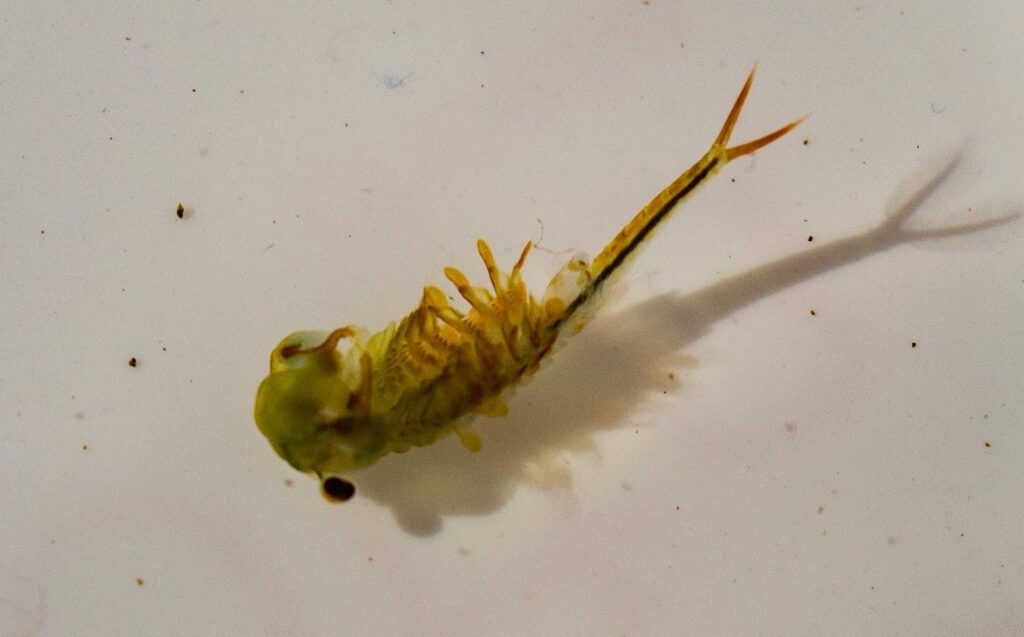
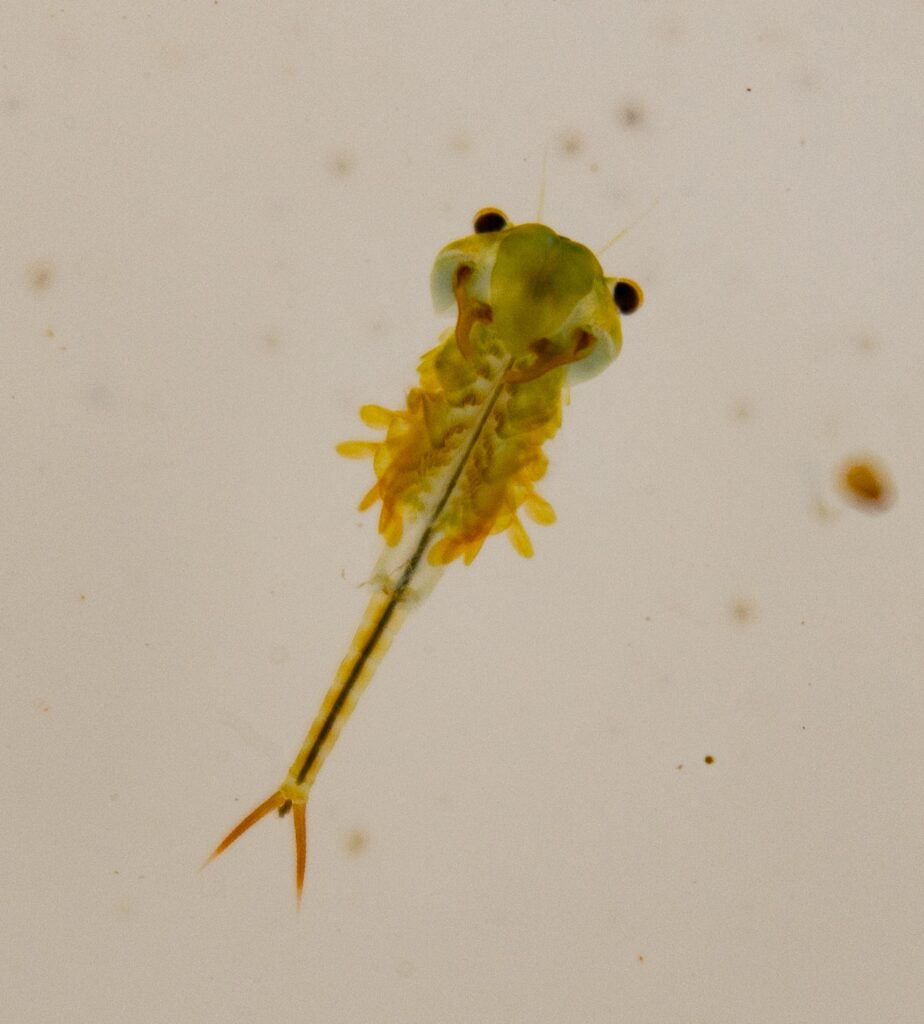

We also checked a few handfuls of leaf litter near the edge of the pool and found lots of fingernail clams. They were so easy to find that there might be tens of thousands in that pool.
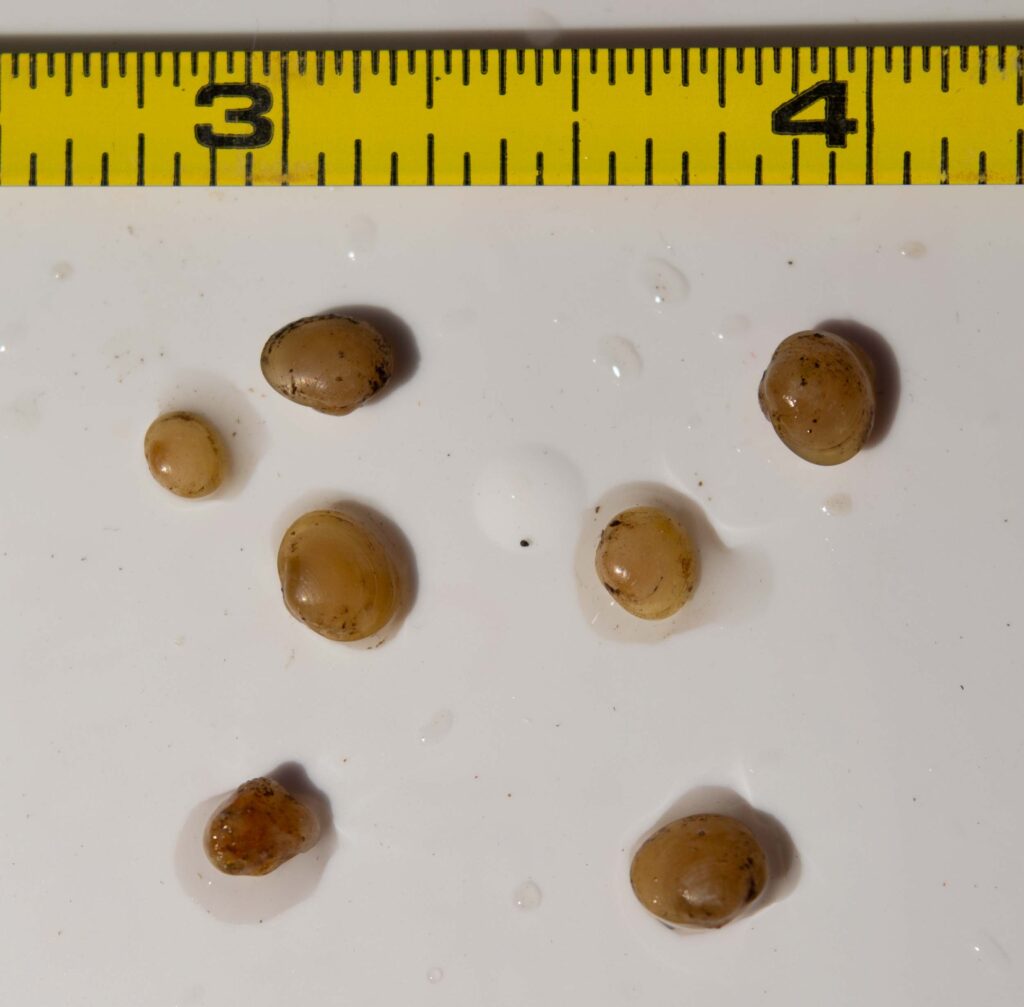
Our invertebrate survey suggests a big difference in caddis fly abundance compared to the old pool. We have found a few in the old pool, but there are lots of caddis fly cases roaming in the new pool. We also learned that they like dead spotted salamanders.
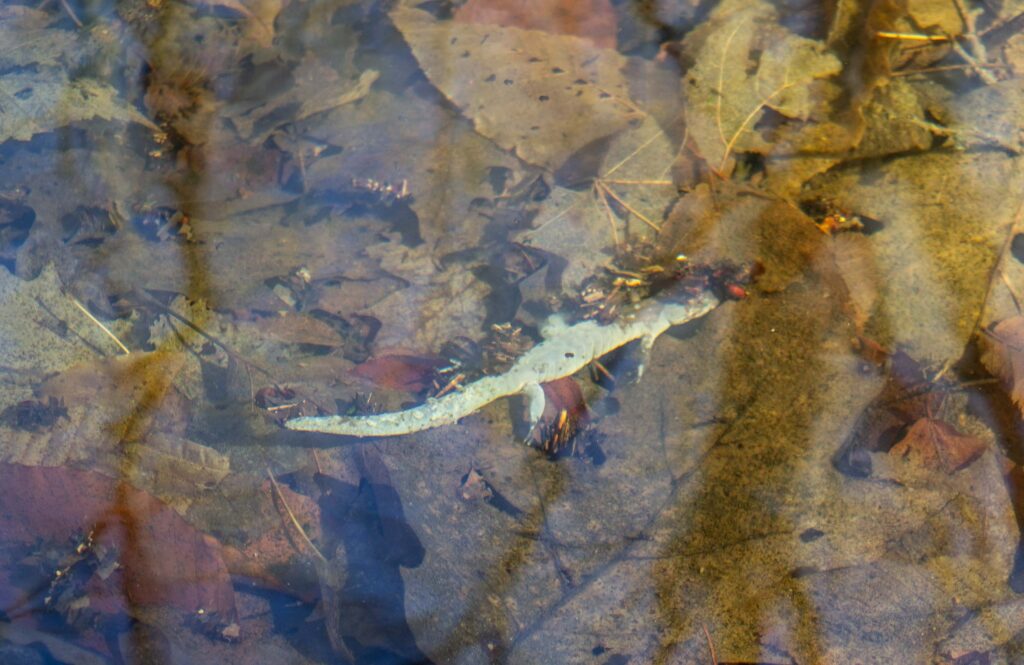
It makes sense that clams and crustaceans (fairy shrimp) do better in calcium rich environments where they have plenty of what they need to build their shells and exoskeletons. I wonder if we should be measuring pH or total alkalinity in the vernal pools to see if that is related to invertebrate diversity. Or maybe fairy shrimp, which have been around since the Middle Cambrian, just really like to be near rocks formed in that period.

I enjoyed your video. There have been Fairy Shrimp in the pool I monitor, MLS411, but I haven’t seen them yet this year. It’s still early.